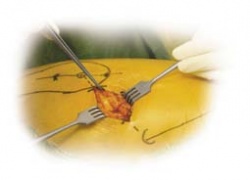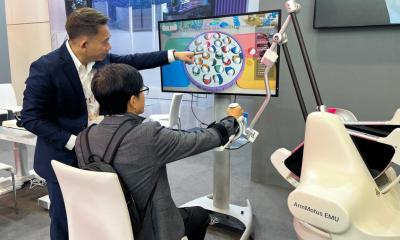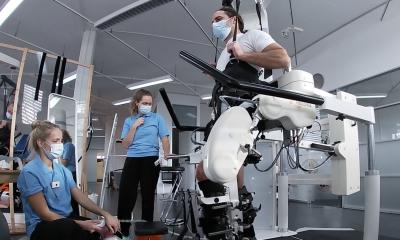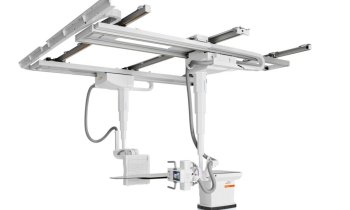The Yale-method for hip replacements
New two-step procedure relieves pain and restores mobility sooner
About 1,600,000 artificial hips are implanted every year, in Germany alone.

On average, after their hip replacement patients cannot walk without crutches before three and a half weeks. Then almost every other patient begins a rehabilitation programme. Mobility, however, could still remain limited because not all implants heal without problems. By 12 years after surgery 95 out of 100 hip implants will have loosened, resulting in another implant – about 25% of all hip endoprosthesis implants are now second implantations - all at considerable financial cost. Clearly it is important to choose the right type of surgical procedure ‘… to achieve maximum protection for the soft tissues and a low rate of complication,’ explains Robert Kipping MD, orthopaedic and emergency surgeon at the Wolfart Clinic in Gräefelfing, near Munich.
John F. Irving MD of the Yale University School of Medicine, New Haven, USA, explained, at a recent symposium, the advantages of a two-step method he has developed. During the procedure he makes accesses to the hip socket from the front and to the hip shaft from the posterior side of the hip, independent of which implant is to be used. Every method has its advantages and disadvantages, be they minimally invasive and/or robot-assisted, but, according to Dr Kipping, ‘The Yale-method combines all the advantages’. Tendon-type structures, which are particularly sensitive and receptive to pain, do not need to be severed and muscles groups that are important for hip function need not be detached from the bone. Moreover, the surgeon works with a direct view and, unlike in some other surgical procedures, is not dependent on the X-ray machine screen and an image transformer.
Statistics appear to confirm the advantages of this new method: The patients can put pressure on the hip joint immediately after surgery and only need crutches for a few days. They do not suffer pain in the upper thigh muscles; most patients can climb stairs unaided just three days after surgery and the pelvis is stabilised within two days. Patients operated on with the previously common, minimally invasive procedures, where one lateral cut is made, were dependent on crutches for 4-6 weeks and the pelvis only stabilised after six weeks. A quarter of those patients still have problems.
As the results achieved in over 600 patients have been consistently successful, for some patients Professor Irving even replaces two hip joints simultaneously in one surgical procedure.
Report: Anja Behringer
17.11.2006







